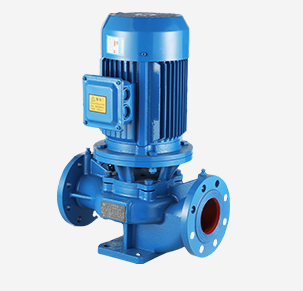English
- Afrikaans
- Albanian
- Amharic
- Arabic
- Armenian
- Azerbaijani
- Basque
- Belarusian
- Bengali
- Bosnian
- Bulgarian
- Catalan
- Cebuano
- Corsican
- Croatian
- Czech
- Danish
- Dutch
- English
- Esperanto
- Estonian
- Finnish
- French
- Frisian
- Galician
- Georgian
- German
- Greek
- Gujarati
- Haitian Creole
- hausa
- hawaiian
- Hebrew
- Hindi
- Miao
- Hungarian
- Icelandic
- igbo
- Indonesian
- irish
- Italian
- Japanese
- Javanese
- Kannada
- kazakh
- Khmer
- Rwandese
- Korean
- Kurdish
- Kyrgyz
- Lao
- Latin
- Latvian
- Lithuanian
- Luxembourgish
- Macedonian
- Malgashi
- Malay
- Malayalam
- Maltese
- Maori
- Marathi
- Mongolian
- Myanmar
- Nepali
- Norwegian
- Norwegian
- Occitan
- Pashto
- Persian
- Polish
- Portuguese
- Punjabi
- Romanian
- Russian
- Samoan
- Scottish Gaelic
- Serbian
- Sesotho
- Shona
- Sindhi
- Sinhala
- Slovak
- Slovenian
- Somali
- Spanish
- Sundanese
- Swahili
- Swedish
- Tagalog
- Tajik
- Tamil
- Tatar
- Telugu
- Thai
- Turkish
- Turkmen
- Ukrainian
- Urdu
- Uighur
- Uzbek
- Vietnamese
- Welsh
- Bantu
- Yiddish
- Yoruba
- Zulu
Telephone: +86 13120555503
Email: frank@cypump.com
Sep . 15, 2024 01:36 Back to list
sewage lift pumps
Sewage Lift Pumps Essential Components of Wastewater Management
Sewage lift pumps play a crucial role in modern wastewater management systems. These powerful devices are designed to transport sewage and wastewater from lower to higher elevations, ensuring that untreated waste does not accumulate and overwhelm drainage systems. As urbanization continues to rise across the globe, the importance of sewage lift pumps in maintaining public health and environmental safety cannot be overstated.
The fundamental principle behind a sewage lift pump is simple it moves wastewater against gravity. In many cases, sewage systems are designed to rely on gravity flow to carry waste away from buildings and into treatment facilities. However, in areas where the elevation does not allow for natural drainage, lift pumps become essential. They are strategically installed at various points within the sewage collection system to facilitate the efficient flow of wastewater to treatment plants, often located at higher elevations.
Sewage lift pumps are typically installed in lift stations, which are integral parts of wastewater infrastructure. These stations consist of a basin that collects sewage and is equipped with one or more pumps. Once the sewage reaches a certain level, the pump is activated, propelling the wastewater upward and into the main sewer line. This operation is vital for preventing backups and overflows in the sewage system, which can pose serious health risks and environmental hazards.
sewage lift pumps

There are various types of sewage lift pumps, each designed to cater to specific needs and conditions. Submersible pumps are commonly used due to their efficiency and ability to operate while submerged in the sewage. These pumps eliminate the need for a separate wet well, making them a space-efficient solution. Another popular option is the dry-pit pump, which is installed above the sewage level, allowing for easy maintenance and inspection. The choice of pump often depends on the volume of sewage, the distance to be pumped, and the elevation gain required.
In addition to their primary function of moving sewage, lift pumps are equipped with several features to ensure reliability and prevent failures. Many modern sewage lift pumps come with advanced monitoring systems that track performance metrics, such as flow rates, pressure levels, and pump speed. Such systems can alert operators to potential malfunctions or blockages before they develop into significant issues, greatly reducing maintenance costs and downtime.
As cities expand and populations grow, the demand for effective wastewater management solutions becomes increasingly pressing. Sewage lift pumps act as a backbone in this infrastructure, enabling the safe and efficient transport of wastewater. Moreover, with the advent of new technologies, manufacturers continue to innovate, improving the efficiency and longevity of these pumps while reducing their environmental impact.
In conclusion, sewage lift pumps are indispensable in maintaining the integrity of wastewater management systems. They ensure that sewage is effectively transported to treatment facilities, protecting public health and the environment from the hazards associated with untreated waste. As our urban landscapes evolve, the importance of these pumps will only continue to grow, highlighting the need for ongoing investment in wastewater infrastructure and technology.
-
ISG Series Vertical Pipeline Pump - Chi Yuan Pumps Co., LTD.
NewsJul.30,2025
-
ISG Series Vertical Pipeline Pump - Chi Yuan Pumps Co., LTD.|energy-efficient fluid handling&industrial durability
NewsJul.30,2025
-
ISG Series Vertical Pipeline Pump - Chi Yuan Pumps | Advanced Engineering&Industrial Efficiency
NewsJul.30,2025
-
ISG Series Pipeline Pump - Chi Yuan Pumps | High Efficiency, Energy Saving
NewsJul.30,2025
-
ISG Series Vertical Pipeline Pump-Chi Yuan Pumps|High Efficiency&Reliable Performance
NewsJul.29,2025
-
ISG Series Vertical Pipeline Pump|High Efficiency&Low Noise
NewsJul.29,2025










